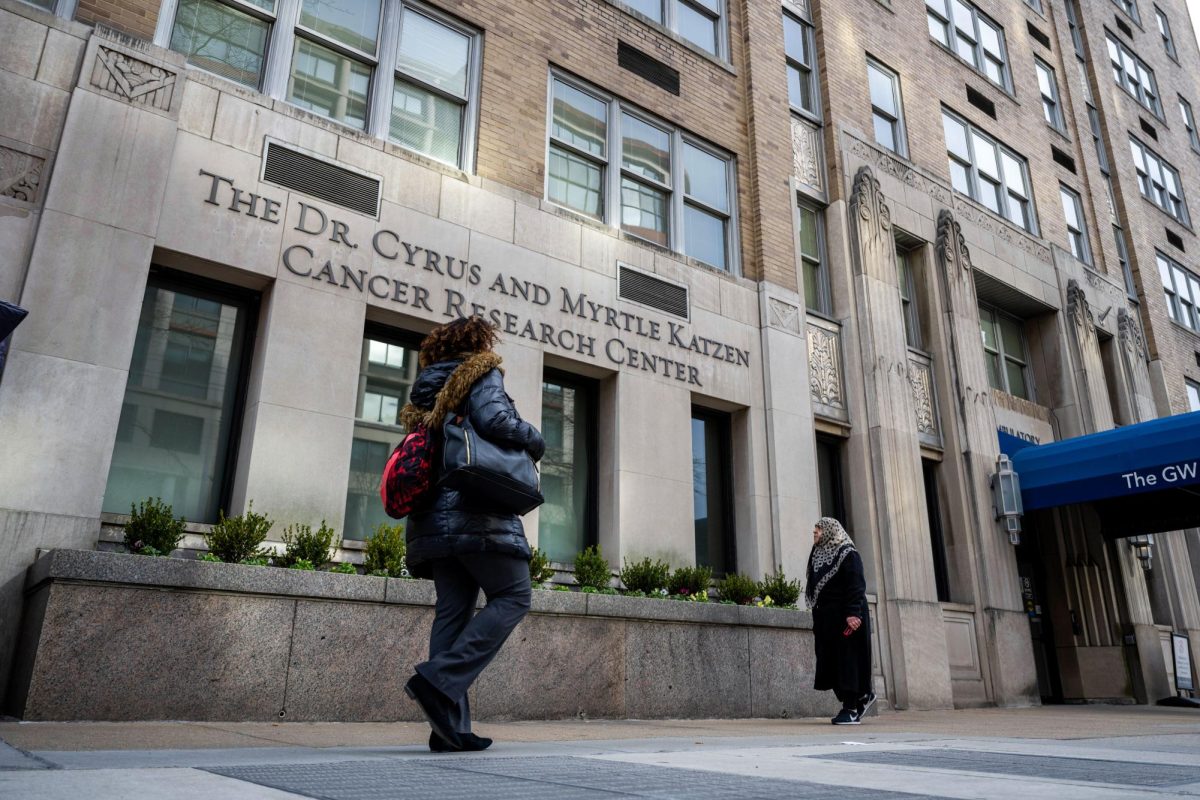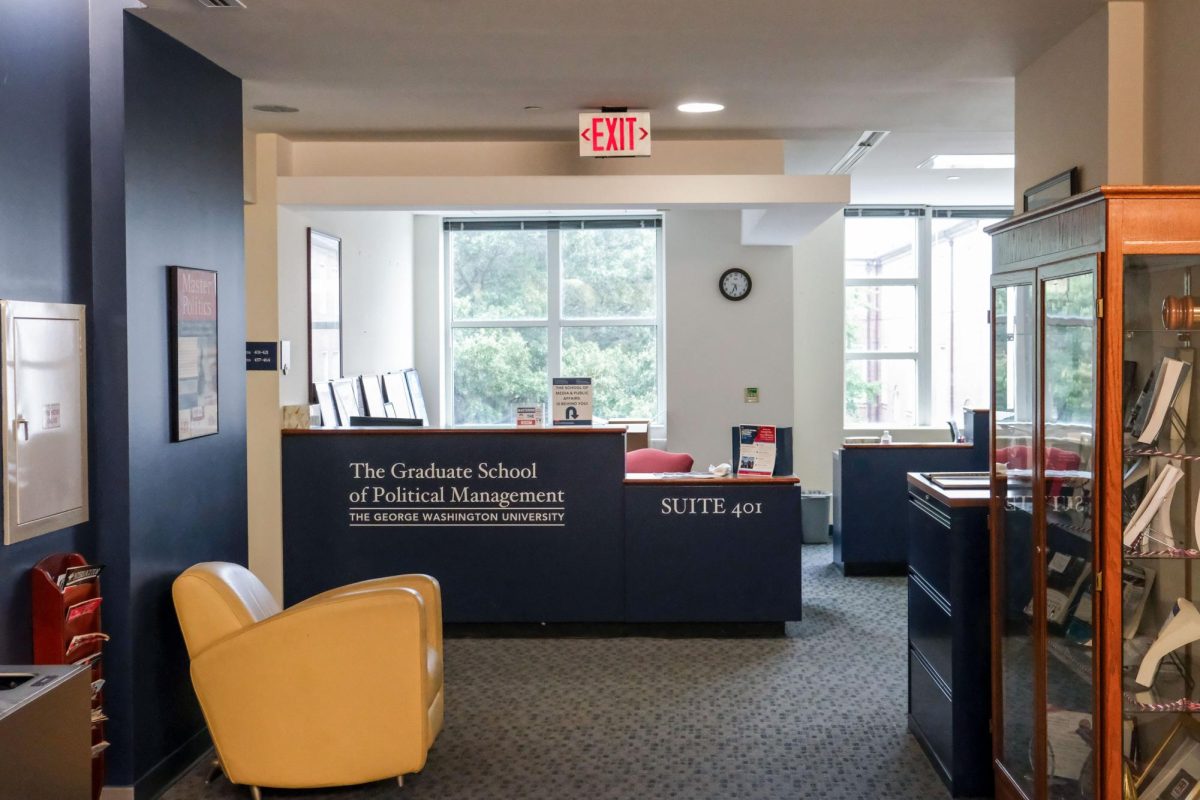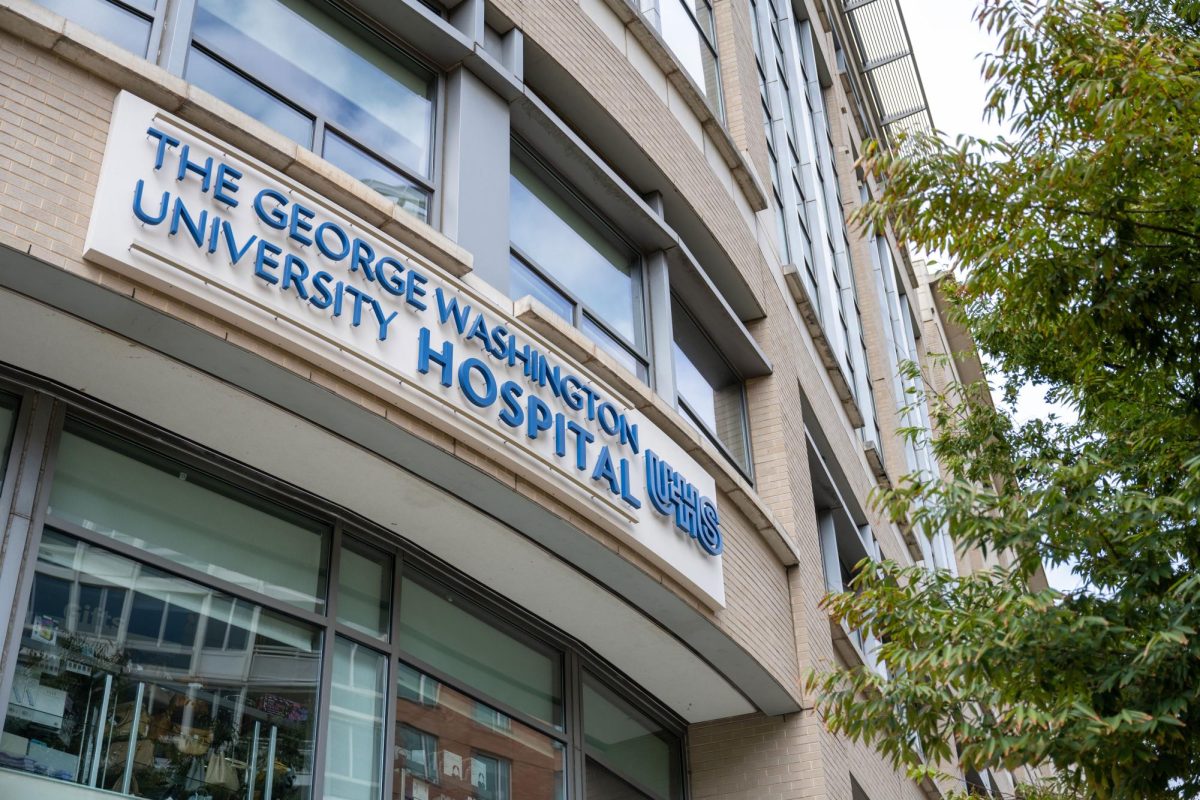GW’s Cancer Center launched a program last month to evaluate patients with potentially cancerous lung abnormalities.
The GW Incidental Lung Nodule Program will provide evaluations for patients with lung nodules, or abnormal masses in the lungs, so patients can avoid unneeded treatments and surgeries by identifying malignant growths early. Sora Ely, a thoracic surgeon at GW Hospital who leads the program, said officials established the program to collaborate with their Lung Cancer Screening program because people diagnosed with lung cancer who get screened through a nodule program have improved survival rates because physicians spot cancerous development more frequently.
Physicians will connect patients with recently detected lung nodules to members of a team of experts in radiology and respiratory medicine, according to a release.
“GW’s ILN program will improve the quality of care for patients with lung nodules by providing comprehensive evaluation and follow up with the same team at every call and visit,” Ely said in an email.
Lung nodules are abnormal growths of tissue in the lungs — often found when patients undergo CT scans for unrelated medical issues or emergencies — which are often benign but can develop to be cancerous. Managing the nodules primarily requires monitoring for changes or improvement because there is no noninvasive treatment for the growths.
Ely said nodule programs are more thorough and can result in more frequent cancer detection than lung cancer screening programs because lung nodules are so common. She said the program, which accepts referrals, will use a detection software and the guidance of other physicians on the team who will “meticulously” monitor patients.
“There is a need for programs like ours that provide multidisciplinary expert guidance to providers who may not have the time or expertise to manage the nodules themselves,” Ely said.
Keith Mortman, the chief of Thoracic Cancer at SMHS, said the program at the GW Cancer Center will have a “customized care plan” for each patient based on a patient’s medical history and conditions.
He said physicians will determine treatment and next steps by evaluating the type, size and location of nodules and other factors like the patient’s age, smoking history and any medical conditions they may have. He said only a “small percentage” of patients with incidental lung nodules — abnormal growths discovered during an examination for a reason other than the nodule — require treatment, adding that physicians will follow most patients with a series of CT scans to continue monitoring the nodules.
“For patients with incidentally discovered lung nodules, treatment will depend on the number, size, and location of the nodule(s) as well as the patient’s medical history,” Mortman said in an email.
Just under 6 percent of eligible Americans received a lung cancer screening in 2021, in part because lung cancer screenings have many qualifications for insurance coverage — like patients between 50 and 80 years old who smoke or quit within the last 15 years — unlike other cancer screenings that just have an age requirement. Lung cancer also has one of the lowest survival rates, often due to late diagnoses.
Mortman said the advancement of CT scans and other imaging technology has made the evaluation of lung nodules increasingly thorough because they allow doctors to see the smallest of lung nodules, which are usually found to be benign.
Once the nodule has been monitored for two years, the chances of the nodule becoming cancerous are increasingly low because the masses tend to stop growing and likely don’t need treatment, he said. If the lung nodule does grow over the two years, doctors may order a biopsy to determine if the nodule is cancerous, he said.
“If a nodule is found to grow or become more dense during the surveillance period, then a biopsy may be required,” Mortman said. “Ultimately, only a tissue biopsy can definitively prove if a lung nodule is benign or cancerous.”
He said the program will provide “various minimally-invasive” techniques for the small number of patients whose lung nodules grow over the two-year surveillance period and require a biopsy to determine if their lung nodules are cancerous.
Experts in lung cancer said there is a need for additional lung nodule screening because lung nodules are common but under monitored.
Jasleen Pannu, an interventional pulmonologist and assistant professor at Ohio State University, said there is a nationwide need for lung nodule programs because of their prevalence, with 1.6 million patients found with lung nodules every year. Despite so many nodules being found every year, the rate of cancer detection on initial screenings is low, Pannu said.
“There’s a process of figuring out which nodule has a higher risk of being cancer and having shared decision-making visits with the patient, where you discuss all the options, you assess what is good for the patient, what would be the preference of the patient and then take them for biopsies,” Pannu said.
Katrina Steiling, an assistant professor of medicine at Boston University, said privacy laws could make referrals to the program difficult in some cases. Sterling said if a patient has an unrelated screening in an emergency department outside of the hospital system where they usually receive their care, national privacy laws regarding the transfer of health-related data can sometimes prevent a primary care doctor from learning the patient has lung nodules.
Steiling said lung nodules may go unmonitored because of socioeconomic factors like health insurance coverage, transportation, and paid time off, which could prevent someone from receiving regular follow-ups and screenings. Since doctors often deem lung nodules low-risk, those who have financial restraints and difficulty accessing health care may not follow up with screenings, especially if they have other pressing health issues, she said.
Steiling said a lung nodule program can be beneficial in closing these gaps in care.
“Programs like this can help by building local expertise for managing factors that might prevent patients from attending their follow-up appointments for lung nodules and build a framework for connecting patients to resources that can help overcome those barriers,” Steiling said.
Rory Quealy contributed reporting.





